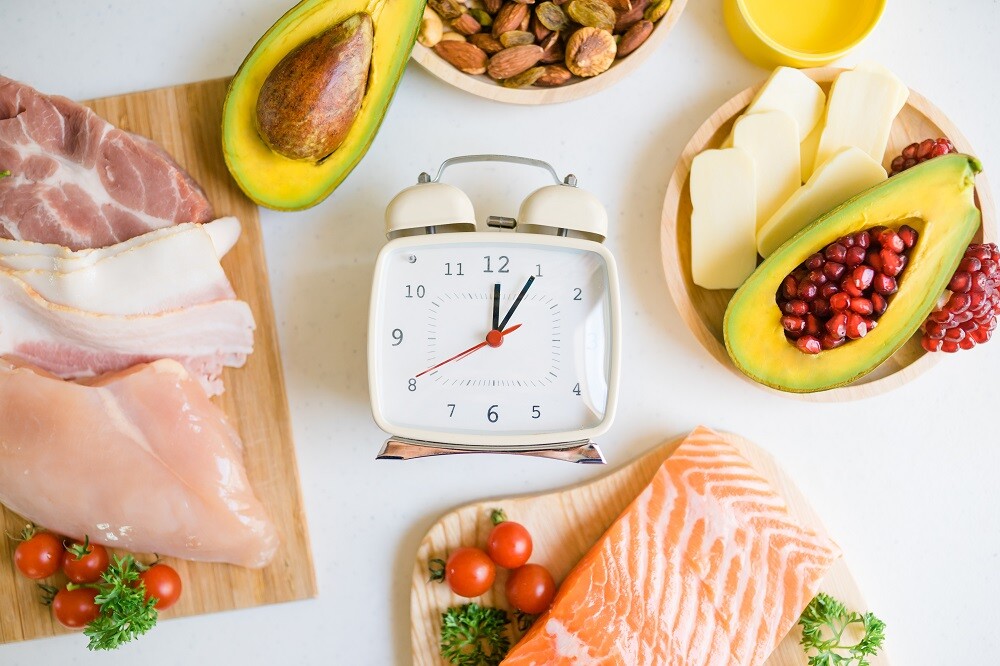I always know when winter is just around the corner when all the yummy summer fruits like cherries, red dragon fruit and mangoes disappear from the sh...
I always know when winter is just around the corner when all the yummy summer fruits like cherries, red dragon fruit and mangoes disappear from the shelves and replaced with autumn fruits like mandarins and pears.
The summer fruits that we can buy right now are often imported and usually cost a fortune.
Why Eat Seasonal Fruit and Vegetables?
With the price of local fruit and vegetables skyrocketing at the moment for a variety of reasons, it makes it even more important to eat seasonal fruits and vegetables.
Produce that’s not in-season is usually picked early and held in cold storage, which can not only reduce the flavour but its nutritional potency too.
While technology has made it simpler and easier to sell fruits and vegetables all year round, it hasn’t always maintained the taste.
Fruits and vegetables that are in-season spend less time from farm to fork, which helps maintain their nutrition and flavour.
In addition to having more nourishment and taste, fruits and vegetables in-season typically cost less.
Experts say our bodies are made to eat seasonally to provide us with the necessary nutrients applicable for that time of year.
In late autumn and winter the in-season produce is generally rich in vitamin C to help fortify us during cold and flu season.
The peaches, plums and other stone fruits that are prevalent in summer contain extra beta-carotenes and other carotenoids that help protect us against sun damage.
As the weather starts to get colder, the sorts of foods I eat also changes and I’m not alone in favouring more filling and warming foods.
Autumn in-season Fruit and Vegetables
Apples, Broccoli, Cabbage, Celery, Cranberries, Edamame, Eggplant, Green onions, Kale, Pomegranate, Potatoes, Pumpkin, Spinach and Zucchini
Susie’s Day on a Plate in May
Breakfast – Porridge with Almond milk, season fruit and Stevia
This breakfast always fills me up and I’m generally not hungry until lunchtime. I make my porridge in the microwave with dry oats, water, and a pinch of salt. When it’s cooked and creamy, I chop up and add a half an apple or pear and some unsweetened 100% almond milk and Stevia to sweeten it.
I use almond milk because I like the nutty taste but there are also positive benefits to drinking it over cow’s milk. Almond milk does not contain cholesterol or lactose and is low in saturated fat.
While you can make your own almond milk at home, it’s often easier to buy commercial almond milk but be aware that it comes in many varieties, some not–so-healthy, so I suggest you read the label first.
I was surprised to see how many varieties of Almond Milk are on the supermarket shelves and how much they vary in price. They come sweetened or unsweetened, some are flavoured, and others have vegetable oil added. Almond milk is also fortified with other vitamins and nutrients.
Sammi Haber Brondo, MS, RD, CDN, registered dietitian nutritionist and author of The Essential Vegetable Cookbook, recommends choosing an ‘unsweetened’ almond milk, which still has a delicious, sweet taste, but without the added sugar and says, “It’s best to look for almond milk with a shorter ingredient list and fewer ingredients added to it. While it’s normal and totally safe to have a few stabilizers added, more than 2 or 3 of them is, for the most part, unnecessary”.
The almond milk I use is in a duck-egg blue carton called Inside Out Unsweetened with 100% Aussie almonds and I can only seem to find it in Woolworths.
Lunch – Small tin of Tuna with chilli, shredded cabbage and carrot on multi-grain bread roll.
I’m often too busy during the day to sit down to a big lunch so I’ll sometimes have a bread roll on the run. Cabbage, which is currently in-season, is one of my favourite veggies and I enjoy eating it cooked or raw. If it’s on a sandwich I like to finely shred the raw cabbage and carrot and pile it on. Instead of using butter or margarine, I add a little bit of Kewpie mayonnaise to the cabbage.
Dinner – Barramundi, sweet potato and broccoli (which are both in-season).
Barramundi is my favourite fish and I always eat it with the skin on. I either pan-fry it in a non-stick pan or bake it if I’m feeding more people than just me and I squeeze fresh lemon over it when it’s cooked. I either steam or bake the sweet potato and mash it and team it with some steamed broccoli.
Snacks
- Strawberries – this delicious in-season fruit is rich in vitamin C, (even more than oranges), and has less sugar than lemons. Strawberries have lots of other vitamins and minerals and health properties.
The best way to eat strawberries to ensure their antioxidants are at their most effective is raw when they are fresh and ripe and bright red without any added sugar or cream or ice cream.
- Soup – Now that the weather is cooler I’m enjoying a cup or bowl of soup as a snack. It warms me up and fills me up without adding too many calories and it’s a great way to eat more veggies.
Pumpkins are in-season but I’ve always found pumpkin soup to be a bit bland until a friend of mine’s Mum made it for me once and she added a little chilli and a dollop of coconut cream on the top and it was delicious.
Happy Mothers’ Day
Without a doubt, the most important day in May, if not the year, is Mothers’ Day and I want to wish every Mum, Grandmother, Step-Mum and Foster Mum a very Happy Mothers’ day. I am in awe of you!
I am lucky to have had the best Mum in the world and while she didn’t enjoy cooking or think she was a good cook, I thought she was fantastic.
Potatoes are currently in-season, so I thought I’d pay homage to my Mum by sharing her delicious, easy to make Potato Salad recipe.
By the way, Mum never measured anything out and when I tried to get any recipe from her, she would always say it was a pinch of this or a dash of that.
Mum’s Potato Salad Recipe
1 bag of small chat potatoes
White vinegar
Poly-unsaturated vegetable oil
Chives – finely chopped
Salt
Place unpeeled potatoes in saucepan of cold salted water (you can add vegetable or chicken or beef stock if you want extra flavour)
Bring potatoes to the boil, simmer until tender then drain and allow them to cool slightly.
Peel skin off and slice potatoes into very small pieces while potatoes are still warm.
Add equal amounts of oil and vinegar, a good amount of salt and finely chopped chives then gently mix together (Mum always did it with her hands) and serve. It can be made ahead and refrigerated but it tastes best when it’s at room temperature.
I hope I’ve inspired you to enjoy the produce of the season and you have the chance to be with your loved ones celebrating Mothers’ day.
Stay strong and safe…cheers susie
Susie Elelman AM
Author, TV & Radio Broadcaster
About The Author - AMC Team
Our team consists of doctors, nurses, program assistants, naturopaths and nutritionists that join their wealth of knowledge to offer our patients and website visitors interesting and insightful articles to assist you understand the symptoms you are experiencing and how to relieve them.
You’ll also like these posts
I always know when winter is just around the corner when all the yummy summer fruits like cherries, red dragon fruit and mangoes disappear from the sh...

